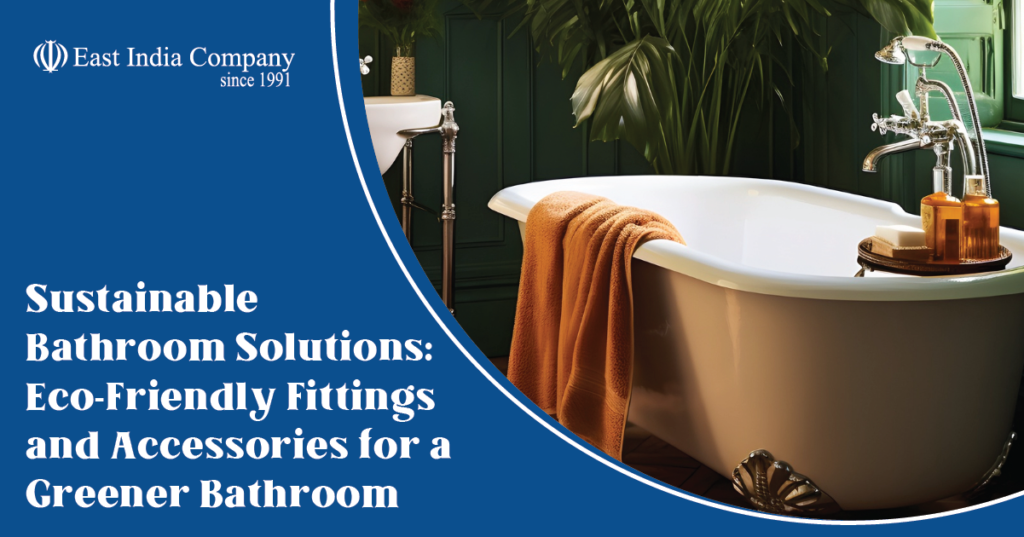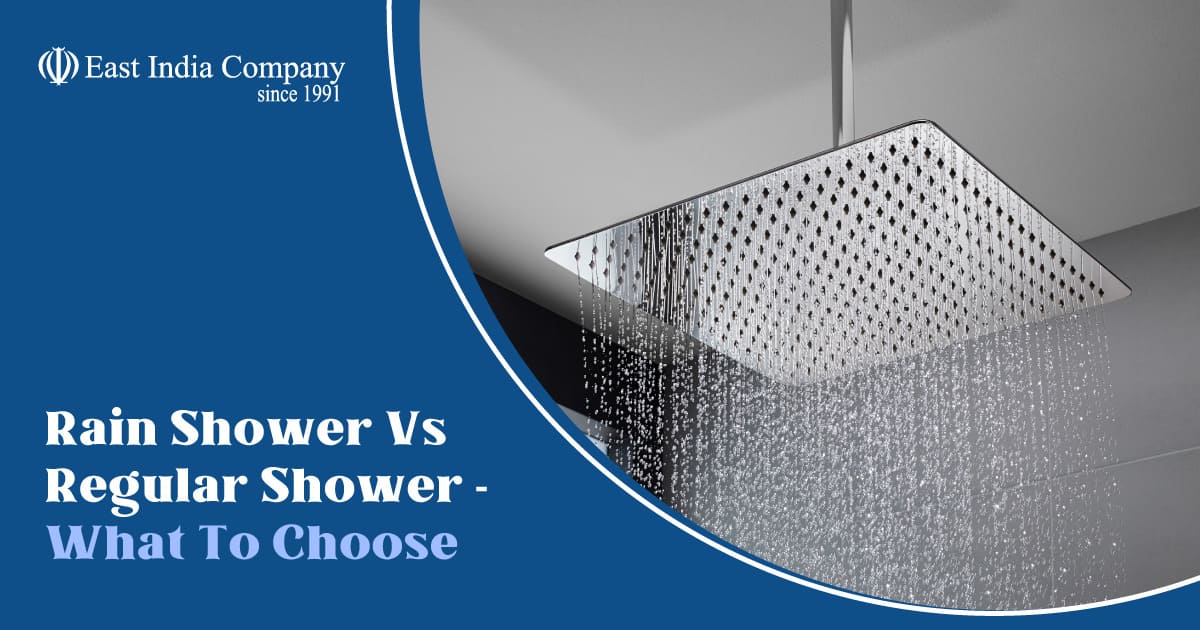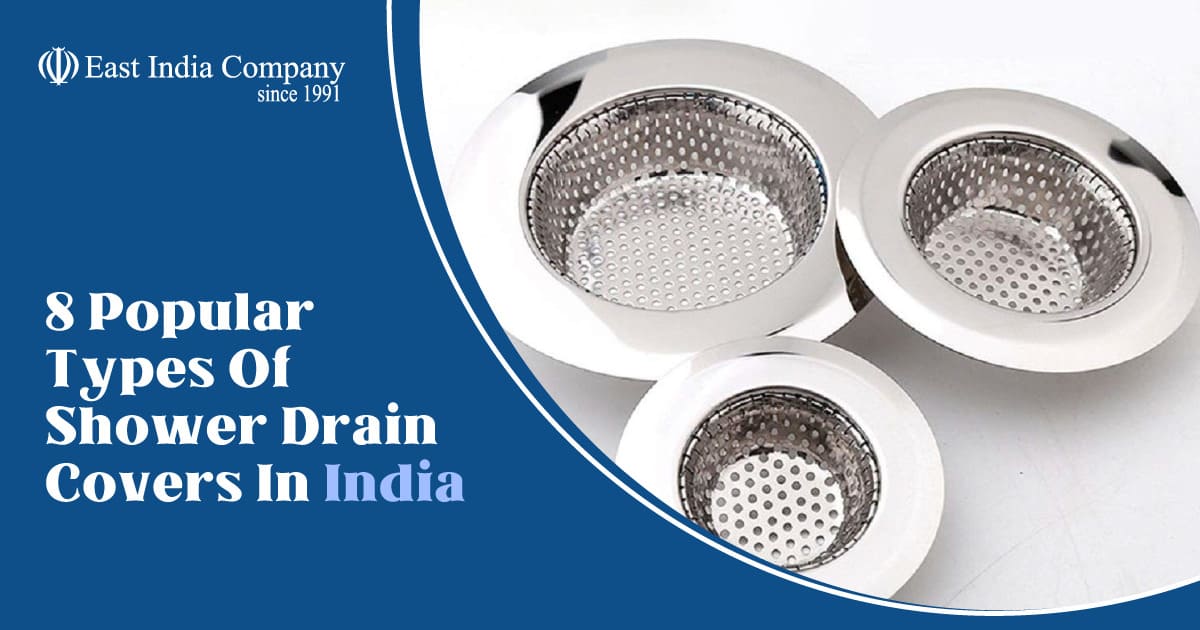Introduction
With climate change and environmental degradation becoming more pressing issues, it is important now more than ever to make sustainable choices in all aspects of our lives. This includes how we design and maintain our living spaces, like the bathroom.
Opting for an eco-friendly bathroom not only allows you to reduce your environmental impact but can also save you money on utility bills in the long run. This blog will explore some sustainable bathroom designs you can implement for a greener, more environmentally conscious space.
Why Should One Opt For Sustainable Bathroom Design?
There are many compelling reasons to choose sustainable options when remodelling or designing your bathroom:
- Conserve Resources: Bathrooms require a lot of water and energy for showering, flushing toilets, running sinks, etc. Eco-friendly fittings like low-flow showerheads and faucets greatly reduce water usage. Energy-efficient lights and equipment also cut down electricity needs.
- Reduce Waste: Opting for durable, natural materials means fewer resources are in landfills. Composting toilets and recyclable/biodegradable products also minimise waste.
- Improve Air Quality: Proper ventilation, indoor plants and non-toxic materials lower pollutants. This creates a healthier environment.
- Save Money: Water-efficient fixtures, energy-saving bulbs and better insulation lower utility bills. Green products also tend to have longer lifespans, saving replacement costs.
- Increase Property Value: Sustainable features like low-flow toilets add to a home’s resale value. Green remodelling also qualifies for tax rebates in certain areas.
- Help the Environment: An eco-friendly bathroom greatly reduces your carbon footprint by conserving water, energy and resources. Even small changes make a significant collective impact.
Sustainable Bathroom Solutions
Here are some impactful, eco-friendly changes you can make for your bathroom as suggested by East India Company.
Opt For Low Flow Showerhead
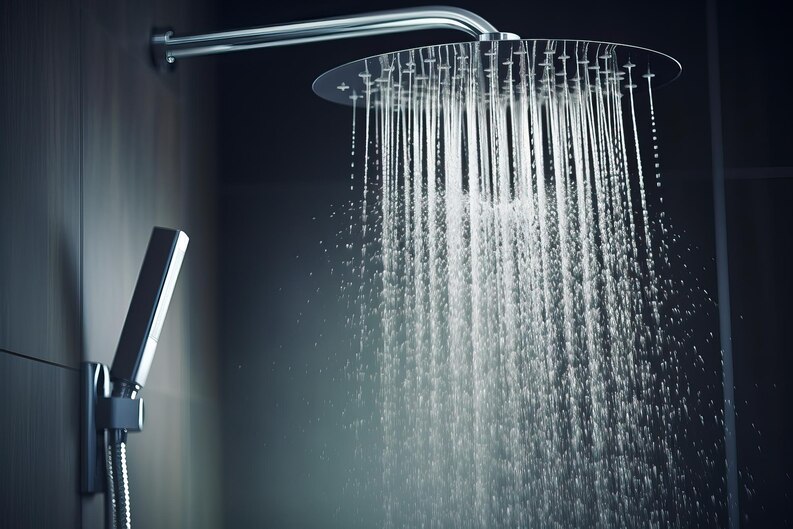
Standard shower heads use around 15 to 20 litres of water per minute. Switching to a low-flow showerhead decreases consumption to around 5 or even 3 litres per minute. This adds up to major water savings over time, especially for households with multiple bathrooms.
Look for the EPA’s WaterSense label when buying a low-flow showerhead. WaterSense-certified models must demonstrate 20% less water usage compared to standard models. Low-flow showerheads also help save energy by reducing hot water usage.
Prefer Motion-Sensing Faucets
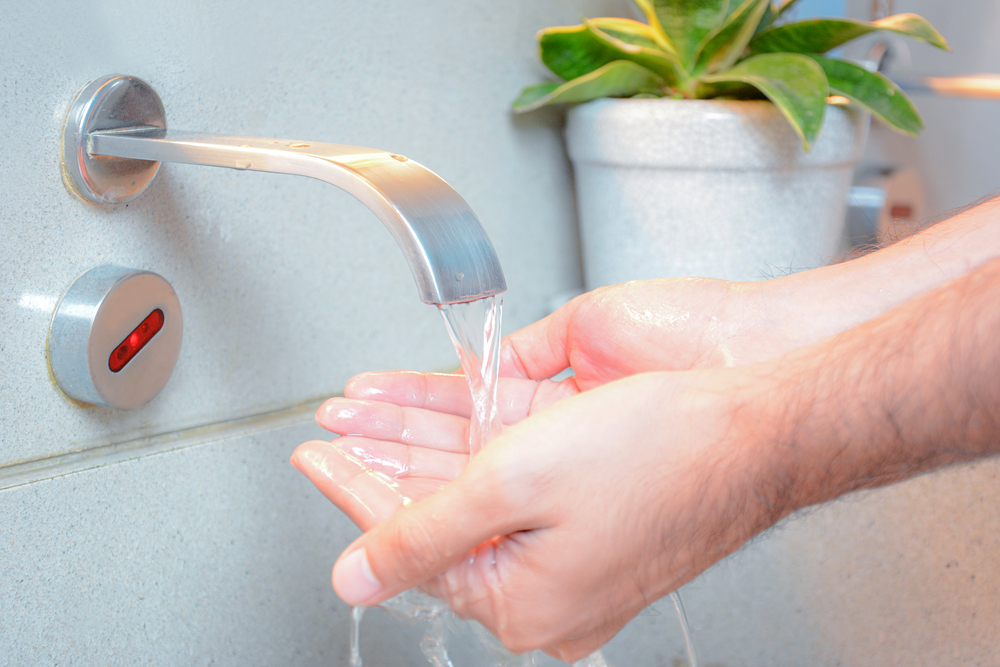
Motion-sensing faucets are a convenient option for reducing water wastage in the bathroom. These faucets automatically turn on when hands are placed near the sink, and shut off soon after. This eliminates water going down the drain due to faucets being left running accidentally.
Motion-sensing bathroom faucets do use batteries or electricity. But the water savings usually far outweigh the minimal energy used. Just make sure any model you choose is EPA certified to ensure efficiency.
Get more natural plants
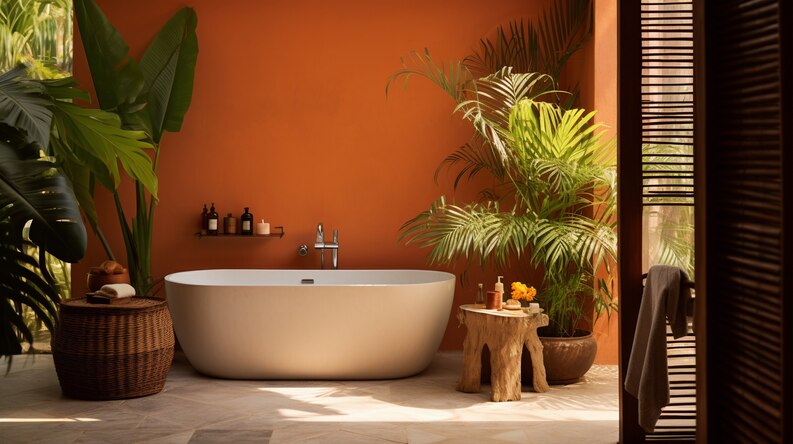
Adding houseplants is an easy way to improve air quality, absorbs toxins and boosts humidity in your bathroom. Plants help filter out pollutants and replenish oxygen levels. Some great options are aloe vera, orchids, ferns and snake plants. Place them in corners, on the floor, or install hanging planters.
Just be sure to pick plants suited to bathroom humidity and indirect sunlight. Also, use pots with drainage holes and water plants appropriately to avoid root rot.
Get Low-Flow Toilets
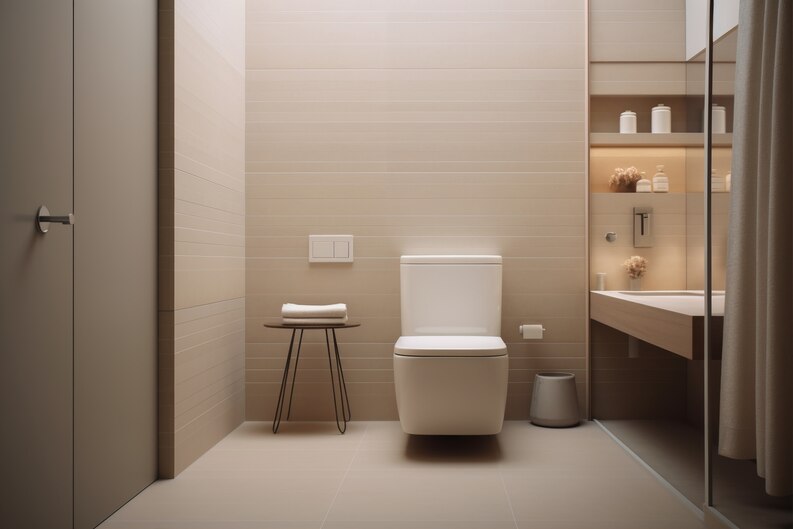
Toilets use nearly 30% of indoor water per flush. Upgrading to a WaterSense-labeled toilet rated at 1.28 gpf or less reduces usage by over 60%. Dual-flush toilets provide even greater control by using just 0.8 gpf for liquid waste.
Low-flow toilets work effectively and are durable choices. When purchasing, look for EPA WaterSense certification and a MaP (Maximum Performance) score over 500 grams to ensure efficiency and performance.
Install Energy-Efficient Equipment
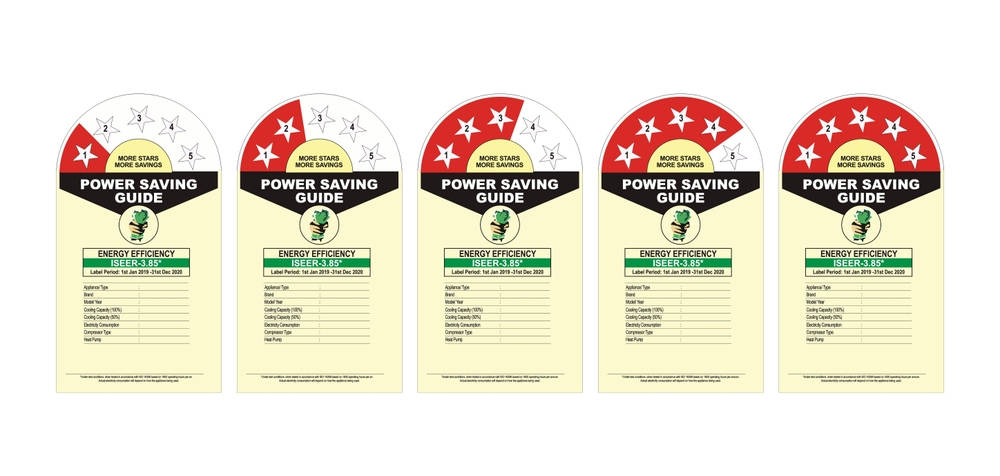
Switching to LED lights slashes electricity bills as they use up to 90% less power but last 25 times longer than incandescent. Install a moisture-sensing fan that automatically switches on during showers to vent humidity. Heat lamps and instant geysers consume much power – consider more sustainable options.
When installing or replacing equipment like water heaters, pumps, exhaust fans, etc., look for ENERGY STAR-rated models. ENERGY STAR certification means products meet strict energy efficiency guidelines set by the EPA.
Insulating hot water pipes also minimises heat loss, allowing your water heater to work more efficiently. Programmable thermostats further optimise energy use based on your schedule.
Buy compact recyclable water closets
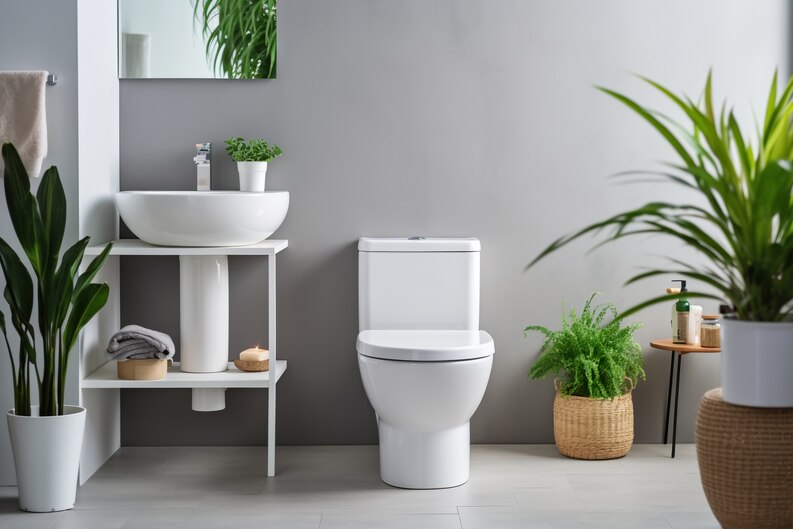
Water closets are the in-wall cisterns that store and flush water in toilets. Space-saving wall-mounted or compact water closets free up floor area without compromising functionality.
Opt for dual-flush models and recyclable materials like recycled plastic to lower the environmental impact of manufacturing. These are durable and conserve resources.
Replace Lights With Led Bulbs
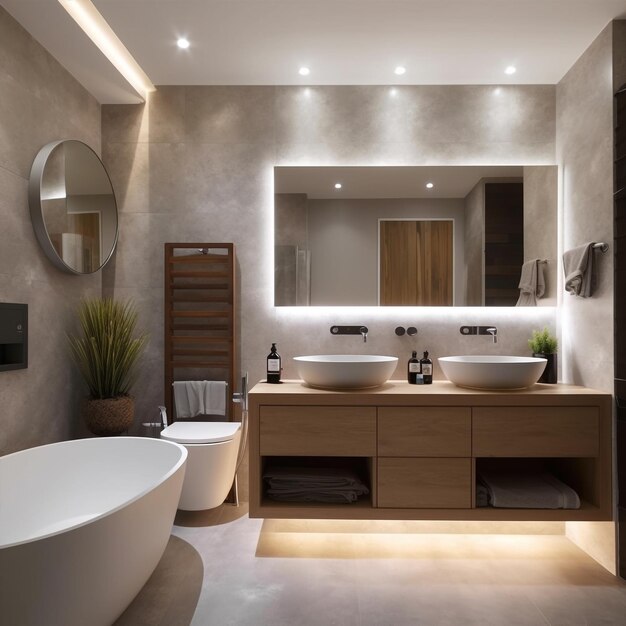
Retrofitting all bathroom lights, from vanity to shower, with long-lasting LEDs is an affordable way to reduce electricity usage over time significantly. They don’t emit as much heat, so they are safer around moisture. And unlike CFLs, LEDs do not contain toxic mercury.
LED bulbs use at least 75% less energy and last 25 times longer than incandescent bulbs. And unlike CFLs, LEDs do not contain toxic mercury. Look for ENERGY STAR-rated LED bulbs to ensure quality and efficiency.
Opt for biodegradable plastic
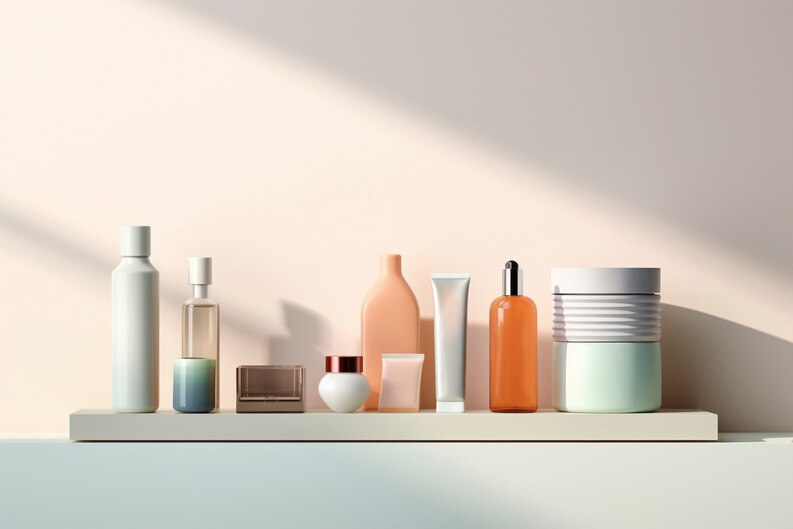
Many bathroom accessories and products contain plastic that ends up in landfills. Select bioplastics like PLA or recycled plastic for shampoo bottles, toothbrush holders, shower curtains, trash cans, etc.
Look for the Seedling logo or FSC certification to ensure plastic comes from sustainably managed forests.
Biodegradable plastic is derived from renewable plant sources instead of fossil fuels. These plastics safely break down through natural processes and do not leave behind harmful residues. Now, several home brands are offering biodegradable plastic products.
Eco-Friendly Materials For Bathroom Remodelling
- Ceramic: Ceramic is an excellent eco-friendly choice for bathroom tiles and sinks. Made from natural clay, ceramic is completely biodegradable and recyclable. The glazing process makes it water-resistant, easy to clean and stain-resistant. Ceramic also does not emit VOC’s or other toxic chemicals. Opt for tiles with at least 30% recycled content.
- Steel: Stainless steel is another green material suitable for sinks, cabinets, shelves etc. It is highly durable, recyclable and does not require toxic finishes. Steel is also easy to clean, hygienic and contemporary looking. Opt for recycled stainless steel with at least 30% post-consumer recycled content.
- Bamboo: For bathroom cabinets and flooring, bamboo is a sustainable option. Since it is a highly renewable grass that matures rapidly, it requires minimal water and pesticides to grow. Bamboo has natural antibacterial properties, is moisture resistant, and is durable. Opt for bamboo products with low VOC finishes.
- Brass: Brass is an eco-friendly metal made from copper and zinc. Brass bathroom fixtures like taps, shower heads and drains are naturally antimicrobial. Brass is also durable, easy to maintain, and can be recycled. Vintage and reclaimed brass pieces add character to bathrooms. Opt for brass with recycled content.
- Reclaimed Wood: Wood introduces warmth to bathroom interiors. Using reclaimed and recycled wood minimises deforestation. Old railway sleepers also make rustic bathroom shelving. Avoid new wood; source authentic reclaimed lumber.
Choose The East India Company For All Your Bathroom Fittings Needs
The East India Company is the one-stop-shop for all your bathroom fittings needs in Chennai. We offer a wide range of products, including modular kitchens and appliances, exclusive designer tiles, safety lockers, bathroom fixtures, and accessories.
With more than two decades of experience in the sanitaryware industry, East India Company is one of the country’s leading suppliers of sanitaryware products. We offer products from leading brands, so you can be sure your bathroom fittings will be high quality, affordable, stylish, and durable.
Conclusion
Creating an eco-friendly bathroom is a meaningful way to reduce your environmental impact at home. You can design a gorgeous green space with sustainable fittings, low-flow fixtures, natural materials, and energy and water-saving upgrades.
Following the sustainable bathroom design, tips and suggestions outlined above will help you make informed, planet-friendly decisions when renovating your intimate space. Focus on conserving resources, reducing waste and using non-toxic materials for a healthy, sustainable space your whole household can enjoy.
FAQs
1. What is an eco-friendly bathroom?
An eco-friendly bathroom uses materials and fixtures that are environmentally sustainable. It aims to reduce water and energy usage through efficient toilets, low-flow showerheads, and motion-sensor lighting. It utilises recycled, renewable, and low-VOC materials that are environmentally safe.
2. What does a sustainable bathroom look like?
A sustainable bathroom typically features water-efficient fixtures, natural lighting, and eco-friendly materials. It limits freshwater usage with low-flow toilets and showerheads while maximising natural light through large windows or skylights to reduce electricity needs. Sustainable bathrooms also use recycled, renewable, low-maintenance materials with minimal environmental impact.
3. Is a green bathroom a good idea?
A green bathroom is a good idea because it helps conserve water and energy. Using eco-friendly products and materials can also reduce your environmental footprint. Making small changes to make your bathroom more sustainable is better for the planet.
4. What are the benefits of eco-friendly bathrooms?
Some key benefits of eco-friendly bathrooms are that they help conserve natural resources and reduce environmental impact. Eco-friendly bathrooms use less water and energy through products like low-flow toilets and showerheads. They also employ sustainable materials and practices which lessen the bathroom’s carbon footprint.
5. What is minimalist bathroom design?
A minimalist bathroom design focuses on simplicity with only essential elements. It removes excess decorations, fixtures, and accessories to declutter the space. A minimalist bathroom has clean lines, open space, and a calming atmosphere, using only necessary items like a shower, toilet, and sink in neutral colours and materials.

